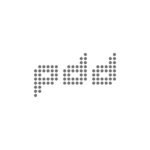Putting medics at the heart of innovation
PDD launches new initiative to put medics at the heart of innovation
We are delighted to announce the appointment of Dr Jim Roberts, consultant anaesthetist and medical innovator at University College London Hospitals (UCLH), as an independent advisor in healthcare innovation. This initiative seeks to transform how medical technology is developed and used in hospital settings by putting medics at the heart of the process.
Jim leads The Royal National Ear, Nose & Throat Anaesthetics Department at UCLH, one of the world’s leading research hospitals, where he oversees medical innovation programmes and has been directly involved in the creation of new medical devices to improve safety and effectiveness in anaesthetics. One example is the Epidrum, developed in collaboration with Dr Maan Hasan – a device with improved ergonomics to facilitate epidural access. Dr Roberts and Dr Hassan were awarded the Cutlers’ Gold Medal for Innovation from the Royal College of Surgeons for this work in 2007. He is also a member of The Exovent Charity which has developed, in response to the Covid 19 pandemic, a revolutionary, non-invasive Negative Pressure Ventilation System that seeks to provide safe, affordable, reliable and effective treatment for a broad range of acute and chronic respiratory illness around the world.

Jim graduated from St Mary’s Hospital in London in 1993. He spent the next five years working as a junior doctor, building experience across multiple hospital departments, from orthopaedics to infectious diseases via accident and emergency and intensive care. In 1998, he turned his focus to anaesthesia. After completing the seven-year training programme and gaining Fellowship to The Royal College of Anaesthetists, he was appointed to a substantive consultant position at the Royal National Throat, Nose and Ear Hospital in 2006. He has spent the last 15 years delivering specialist ENT and Head and Neck anaesthetic care as well as maintaining a strong interest in training and innovation. In 2017 he was appointed Clinical Lead for Anaesthesia and in the last year has led his team through the Covid pandemic and the transfer of service from The Royal National Throat, Nose and Ear Hospital on Gray’s Inn Rd to its new home in The Grafton Way Building at UCLH.

Dr Roberts says,
“As a kid, I was always taking radios to pieces and building bikes, so it is no surprise that when I became an anaesthetist – a career that focuses heavily on the interaction between clinical care and equipment – I instantly began to explore how things could be improved. When you look at how medical technology is designed and how it finds its way into a hospital, you will find a process that is often highly fragmented. It is not uncommon for a new device to be brought in based on its enhanced features and commercial value, only to find some minor and occasionally major flaws when using it in a real-world clinical context. That disconnect between a product’s aspiration and the clinical reality ultimately undermines trust, delaying the adoption of advanced technologies in healthcare and hindering our efforts to provide best care.
When you are an anaesthetist in an operating theatre and you are struggling to secure a patient’s airway, having a touchscreen that does not respond when you are wearing blood-stained gloves can mark the difference between life and death. This is why the needs of both patients and medics have to be truly represented in the design of medical devices. And why healthcare professionals, designers, medical device manufacturers, engineers and hospitals need to work in closer collaboration throughout the entire development process. At PDD, we are piloting new ways to achieve that goal, with an approach that is simple and transparent, and gives medics the tools, capabilities and access they need to put new ideas into practice.”
Chris Vincent, Principal, Sector Lead Healthcare at PDD, explains,
“At PDD, our work in healthcare often sits at the intersection of design and science. With this initiative, we take that idea further to improve how medical devices and products are created, evaluated and adopted in the context of hospital environments.
Medics are often the pioneers of new solutions – they have the knowledge and the ambition to make things better for patients. By putting medics at the heart of innovation and combining the rigour and predictive power of medical and scientific research with the experimental nature of the design process, we have a unique opportunity to accelerate healthcare innovations in meaningful, relevant ways.”
Vassilios Kanellopoulos, Global Business Development Director at PDD, adds,
“We are extremely happy to have this great opportunity to collaborate with Dr Jim Roberts and his valuable network. This initiative will continue to drive our innovative work in healthcare, from concepts to product reality, in the context of an everchanging clinical environment.”


